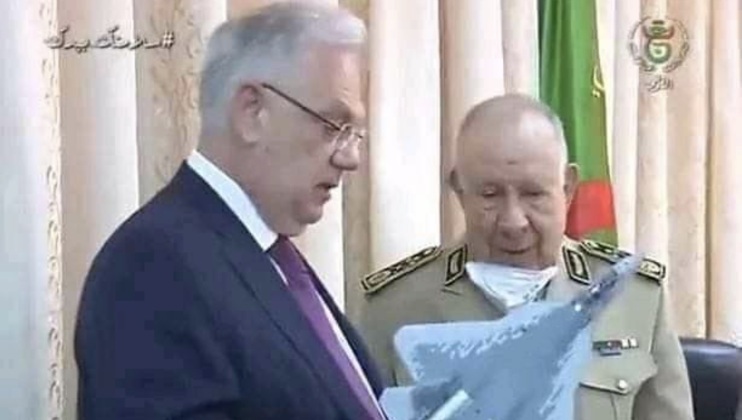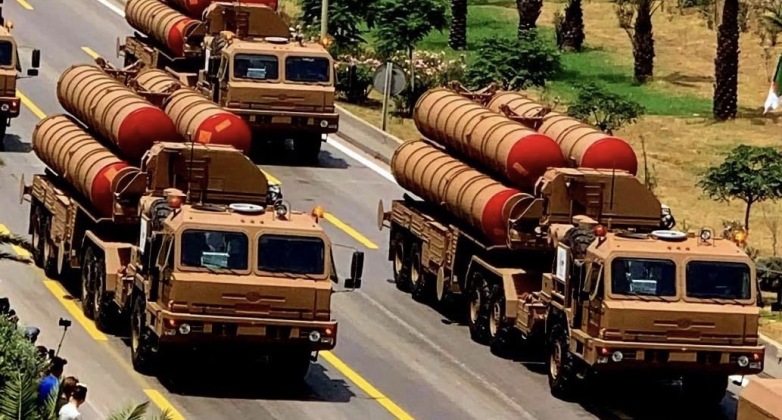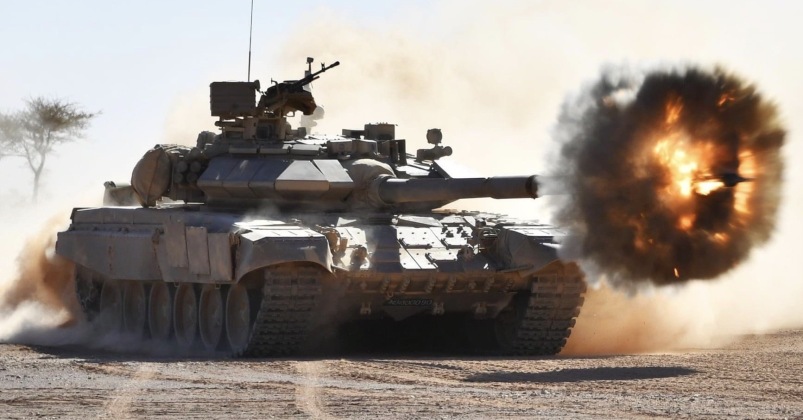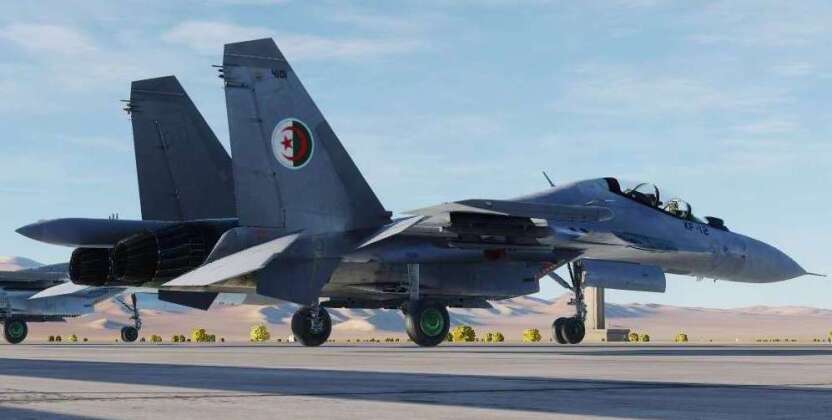News
U.S. Sources Claim $7 Billion Russian-Algerian Arms Deal Signed: These Are Five Major Items it Could Include
Algeria is reportedly set to receive $7 billion worth of new Russian armaments after signing a major arms deal in 2021, with such an agreement long having been speculated. It was confirmed on September 15 in a report from the office of U.S. Senator Marco Rubio calling for American economic sanctions on the African state, consistent with Washington’s policy of initiating economic warfare against all major clients for Russian, Iranian or North Korean weapons. Algeria has since the early 2010s been a leading client for Russian armaments, with the NATO war effort against neighbouring Libya in 2011 having spurred interest in modernising its forces to deter possible Western attacks. With such a threat seen to have remained high, the major boost to state revenues from rising oil prices in 2022 mean its military modernisation efforts can likely be sustained. While the Algerian Military is considered the most capable in Africa or the Arab world, the new capabilities it is set to field over the coming years and the contents of its latest arms deal with Russia have only been speculated and remain unknown. This follows a long trend towards Algeria being among the most secretive of Russian clients regarding its acquisitions, with new acquisitions often confirmed only when photographed in the country itself either officially or otherwise. It is notable, however, that Algeria has often received new equipment at the same time as and at times even ahead of the Russian Military itself, which is a result of both how well funded its armed forces are and the closeness of relations between the two militaries. Based on the information available and the kinds of capabilities the country’s armed forces have prized, a look at five leading possibilities for high end Russian weapons sold to the country are listed below:

Su-57 Fifth Generation Fighters
Algeria has long been considered a leading potential client for the Su-57, which has been seen as key to the country’s security as nearby European states’ growing fleets of F-35 stealth fighters are set to move past their limited Initial Operating Capability in the coming years to potentially pose more of a threat. Algerian military officials have been seen holding Su-57 models in recent years, and a collage of the fighter appeared at the country’s defence ministry in 2020 providing a significant indication that the aircraft was being considered. The fighters were reportedly intended to replace modernised MiG-25 Foxbat interceptors which were retired in June 2022, and are prized for their next generation avionics, sensors and weaponry, very long ranges and extreme manoeuvrability. A unit of 14 Su-57s with associated maintenance equipment and infrastructure, training, weapons and spare parts is expected to cost approximately $2 billion, and would provide an approximate replacement for the MiG-25s. Costs may vary widely as new technologies and subsystems continue to be made available for the fighters, which is expected to lead to a wide range of options for the aircraft. Su-57s are not expected to be available for export until after 2025, although funding from an Algerian order could help to finance the current expansion of production lines to support the program. It is possible that Algerian orders may only be delivered after the improved Su-57M variant becomes available around 2025, likely with new Saturn 30 engines, which would provide a far superior performance.

S-500 Hypersonic Defence System
Algeria is a leading foreign operator of Russian mobile ground based air defence systems, with its network built around the S-300PMU-2 and S-400 systems supplemented by multiple shorter ranged platforms such as the BuK-M2 and Pantsir-SM. Like the Russian Military, Algeria relies heavily on this network to compensate for the relatively small size of its air force, which would be outnumbered in the face of a full scale NATO attack. The country has long been seen as a leading potential client for the new S-500 system, which would provide a new tier to its air defences allowing it to neutralise long range ballistic missile strikes, space aircraft, and perhaps most importantly enemy satellites. This allows it to play a key role in blinding enemy surveillance capabilities and cutting communications. It is also highly capable of intercepting cruise missile strikes including those at higher hypersonic speeds than those the S-400 can defend against. The S-500 is not a successor to any prior Russian system, and instead provides a new capability to complement and serve as a force multiplier for the older S-400 and S-300s. A single S-500 unit to cover the Algerian capital or other strategic locations is expected to cost approximately $1.6 billion.

T-14 Fourth Generation Tank and T-90M Upgrade Packages
Algeria is the second largest operator of the T-90 tank after India, with more units in service than the Russian Army itself, and has been considered a likely client for its successor the T-14. The country has placed a stronger emphasis on its ground forces than Russia has, and could rely on the new vehicle either as a command tank and force multiplier for T-90 units or to form new more capable units alone. The tank is a clean sheet design with little commonality with the T-90 other than its fire controls, but boasts major advantages over rivals including triple the engagement range of its top NATO counterparts, very high mobility and far stronger armour built to endure hits from depleted uranium shells. Algeria may also seek to modernise more of its T-90s to a standard close to the Russian T-90M, which partly bridges the gap with the T-14 in terms of fire controls and provides access to a range of new munition types. With tanks having a negligible cost compared to new aerial warfare systems, a primary issue with acquiring new T-14s would be the added logistics burden of maintaining an operating an entirely new tank class as well as questions regarding when Russia could begin deliveries considering that the vehicle is not yet full operational in the Russian Army itself.

Su-30MKA Upgrade Package: Irbis-E, AESA Radar, AL-41 Engine, R-77M or R-37M Missiles
The Su-30MKA forms the backbone of the Algerian Air Force and is considered the most capable fighter on the African continent, with 72 in service the latest of which were ordered in 2019. Chosen over the French Rafale in the 2000s after surpassing it in almost all performance parameters, the Su-30MKA performs a wide range of roles in the Algerian fleet from anti shipping and air defence suppression to air superiority and bombing. The aircraft are closely related to the Su-30SM and Su-30MKI fielded by Russia and India, with the family of fighters designed to integrate features from the Su-37 prototype air superiority fighter. Although very capable, the Su-30MKA’s advantage could potentially erode over the following decade if not modernised comprehensively.
Russia has offered a range of upgrades for Su-30 airframes, including integration of new AL-41 engines to provide a longer range, lower maintenance needs and greater manoeuvrability, as well as new radars. These include the Irbis-E, the Su-35’s radar with an unrivalled wide aspect detection and formidable capabilities against stealth targets, as well as a more powerful AESA radar derived from that of the Su-57. Su-30s have long been prized for their ability to carry very large sensors, which makes their situational awareness even with older radar designs very formidable. New sensors can also facilitate integration of the R-77M and R-37M air to air missiles, with the more limited capabilities of the R-77-1 Algeria currently relies on being the primary weakness of its Su-30 fleet. The cost of an upgrade package would be difficult to estimate depending on how ambitious it is and what portion of the fleet receives it, but it could well cost around $2 billion or more if full comprehensive upgrades and large supplies of new armaments are commissioned for all 72 fighters.

Su-34M Strike Fighters
Algeria is the leading foreign operator of the Su-24M strike fighter with 37 currently in service, and as these represent some of the oldest combat jets in its fleet it has long been expected that at least a portion will be replaced by new Su-34M aircraft. Algerian interest in Su-34 acquisitions has been reported since the early 2010s, with the aircraft providing the range of a medium sized strategic bomber and having very large weapons payloads. The fighters’ ability to deliver standoffs cruise missile strikes against targets across Europe and deep into the Atlantic, to operate as bombers using precision guided weapons, and even to perform air defence duties when adequately equipped. The cost of 36 Su-34Ms has been estimated at approximately $2.2 billion with associated weapons, training, parts and maintenance equipment, which makes major acquisitions highly feasible should Algeria decide to maintain a dedicated strike fleet and not transition to less specialised aircraft as many countries have.












